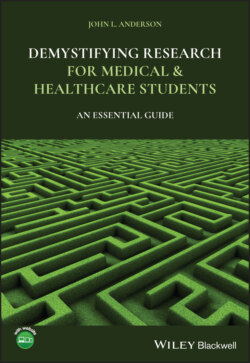Читать книгу Demystifying Research for Medical and Healthcare Students - John L. Anderson - Страница 39
Note about Giving Electric Shocks to Student Subjects in Research
ОглавлениеIt used to be widely accepted that low‐level electrical shocks which were painful, but did not cause actual damage, were permissible in research studies. When I started studying Psychology at Aberdeen, the former professor had been very much into research on learning. Legend has it that he gave his research subjects higher and higher levels of electric shocks in his experiments, until they began to refuse to take part in his research – even though it meant having to fail to meet the course requirements to take part in at least three experiments! So research which involved giving electric shocks to subjects was stopped.
Seligman's work developed further to use the four‐button board with a green light and a red light. The green light signalled success and the red light signalled failure after each burst of the noise. Twenty sets of white noise at 110 dB in 30 second bursts were the aversive stimuli. Students were allocated to an experimental group and a control group. All subjects were instructed that by pushing the buttons in the correct sequence they might stop the noise. If they got it right, the noise would stop and the green light would come on. If they did not get it right, the noise would not stop and the red light would come on. In the experimental group, pushing any button four times would stop the noise and the green light would come on to signal success. In the (helpless) control group, no matter which button was pushed in any sequence or in any number of times, the noise would not stop and the red light would come on to signal failure. After the trial, subjects were tested on simple cognitive tests – anagram solving and arithmetic tasks. Those in the experimental group did better than those in the helpless/control group at solving the tasks. In addition, those in the helpless/control group seemed to lose heart and give up trying to solve the tasks more than those in the experimental situation. He noted that learned helplessness, sapped the motivation to try; it had cognitive impairments, and it had affective (emotional) impairments.
